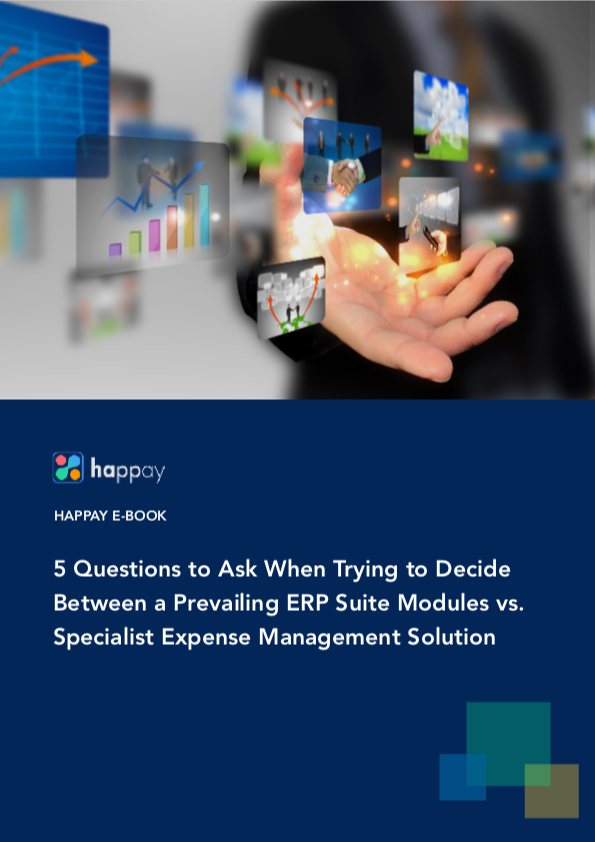Last Updated on November 28, 2025
The move from a legacy system to a modern one is difficult, and riddled with uncertainty and confusion. Here are a few clear pointers to help you decide on an operation, as critical as business expense management.
Expense management is more complicated than ever before.
When you run a business, one of the most basic functions you’ll always have is making sure that your finances are in order. Unfortunately, one of the main components of this function – cash flow – is also among the hardest challenges that you will encounter. Now that organizations are opting for agile business models in the pursuit of new growth opportunities, there’s a burning need for more flexible finances than ever before.
However, what they also need to realise is that their expense management processes need to be as digital and agile as their growth plans. Or their entire business plan will fall flat before it can even take off.
It’s time to go cloud!
Given the dynamic nature of expense management today, legacy ERP systems no longer work holistically. In fact, the need of the hour is a flexible, scalable solution that can not only document erratic monetary transactions but also ensure sufficient, smooth and timely cash flows.
However, the decision to migrate from a legacy system to a new one is always hard. f you’re looking to decide on whether or not you should be considering a boutique expense management solution (EMS), we’ve got you covered.
Here’s a list of the major differences between ERPs and dedicated EMSs:
- Core purpose and application: ERP software is a business process management software that is developed to track resources and processes across all operations, teams, and departments. It aims to automate back-office functions related to managing technology and other resources. Any other function, such as expense management, marketing automation or human resource management, is not a core function. These features are at best basic, and definitely not customisable to niche requirements.A standalone EMS, on the other hand, is dedicated to business spend management and everything that it entails. It helps you process, fund, track and audit business expenses. Another key purpose of dedicated EMSs is the reduction and elimination of fraud. This makes it more feasible and secure to offer expense accounts and corporate cards to employees. new-age EMSs automate and streamline expense management, they are customizable technologies that can be easily adapted to varied financial processes.
- Mobile accessibility: In today’s times, everything is going smart. This means that it’s now part of the basic functionality to have a mobile application for any service. As a result, employees now expect capabilities with technologies that they use at work. But ERP software, besides being web-based, is only desktop-optimized.Taking this into account, dedicated EMSs offer mobile accessibility as well as artificial intelligence (AI)-based functionality. Thus, complicated expense management processes (including multiple, time-consuming approvals) is simplified.
- Cost-effectiveness: ERPs are bundled solutions. This neither gets the required innovation nor the customization you need to suit your specific needs. Moreover, you end up overpaying if you’re not using any of the modules you chose to be part of your package. EMSs offer standalone features and functionalities. This means that you can select as few or as many of them as you meet your business needs. More so, it means that you pay for only what you use.So while bundle discounts may seem attractive, the real question to ask yourself is whether what you achieve in return is worth the price you pay. What you should be looking at is a comprehensive cost-benefit analysis – short-term cost reduction versus long-term cost-saving opportunities.
- Integration with other business software: If you opt for an additional ERP module for expense management, you have no integration woes to think of. The module, which you got on discount, will fit into your base ERP, lapping up data from other modules, and shipping its own data back out. On the surface, it all looks good. Yet, this still doesn’t change the fact that you’re making do with a solution that you have to adapt to – not one that adapts to your needs.Dedicated EMSs, develop in the era of the cloud, support seamless data flows (inbound as well as outbound) with about all other major business applications. This is done with complete automation and zero effort redundancy. They offer open systems that can communicate with other vital business software without the need for dedicated APIs or other connectors.
- User interface & end-user experience: Legacy ERP modules are not known to be very user-friendly, as they often have clunky, non-intuitive interfaces that don’t foster great user experiences. Their spreadsheet-like interface is usually hard to learn to use, and even harder to remember. As a result, you require hours of employee training, only to still end up with a sub-par end-user experience and dissatisfied employees.EMSs, however, are developed with new-age requirements in mind and have therefore been designed with the singular objective of offering a great user experience. They usually offer intuitive user interfaces, with convenient features such as drag-and-drop and single-click functionalities. As a result, training needs are minimal, and yet, employee satisfaction and morale remain high.
The key lies in working smart and working backward.
Undoubtedly, the decision to replace a legacy system is a daunting one. As business technologies continue to evolve, upgrading them is becoming as much a matter of innovation as it is of survival and growth. In today’s hyper-competitive world, companies need to be agile enough to respond swiftly to shifting market dynamics, which isn’t possible with legacy ERP systems.
–>

Having troubles with your existing ERP’s module of Expense Management?
Here’s a checklist that will help answer top five questions to ask yourself while choosing between an existing ERP’s module or an expense management specialist.


Discussion about this post